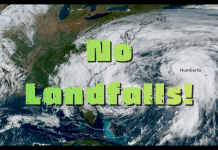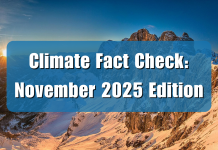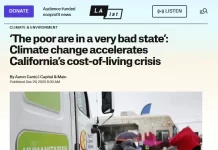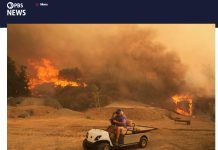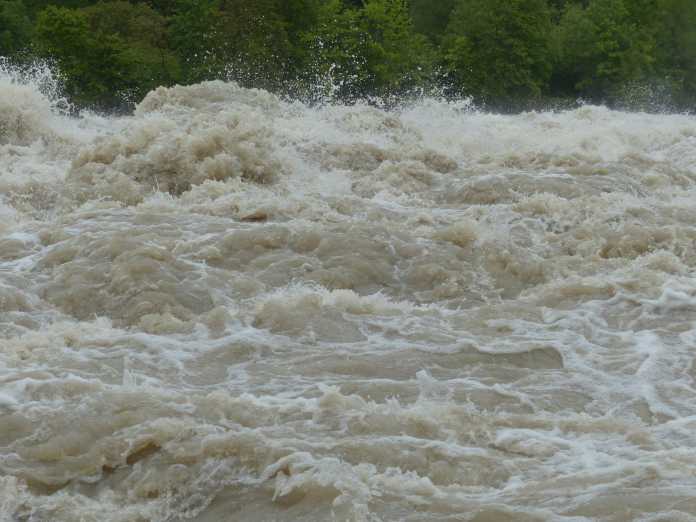A recent article from ABC News implies that the intensity of recent atmospheric river events affecting the West Coast of the United States is unusual and due to global warming. ABC News also suggests atmospheric river events will be more severe in the future due to human climate change. These claims are false. Atmospheric river events are not new to the region, nor is there evidence that they have intensified over time.
The article, “How climate change impacts atmospheric rivers and the storms they produce,” claims increased evaporation due to modest warming is causing more extreme atmospheric rivers, and associated heavy rainfall and flooding.
“[I]ncreased moisture in the air then feeds atmospheric rivers to grow longer, wetter, and more intense in a warming planet, according to scientists,” writes ABC news.
To back its claim of more extreme flooding, ABC New quotes economist Tom Corringham, from the University of California San Diego’s Scripps Institute of Oceanography. Corringham hyped climate alarm, saying, “we will see an increase in intensity,” “we expect to see increased damages.” These comments are based on his work creating predictive models for the effects of climate change, which Climate Realism has shown are inherently unreliable (see here, here, and here for example).
Historical drought data from the United States National Integrated Drought Information System for California, show no increasing pattern off either increased periods of drought or extreme rainfall, or any real detectable pattern at all, of abnormal to exceptionally wet conditions.
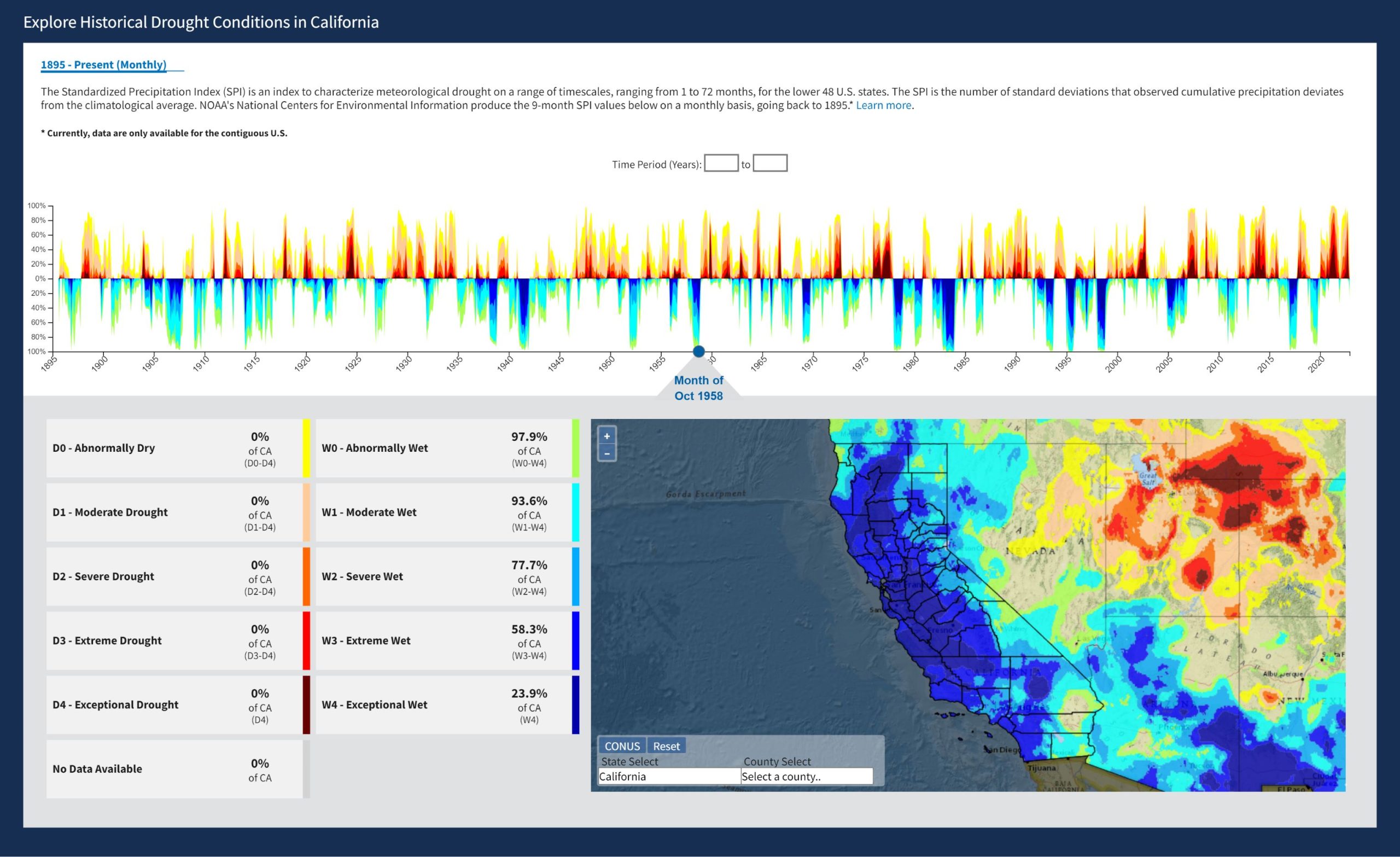
Similar to now, in December 2021, alarmists in the mainstream media sounded the alarm on rainy weather and flooding in the West, attributing it to an unusual to a similar atmospheric river. In a Climate Realism response posted at that time, Anthony Watts thoroughly debunked these claims. He showed that these kinds of weather patterns—periods of drought followed by rainy seasons and flooding—are natural for the region, and that there have been massive floods in the past, long before modern rates of modest warming.
Watts wrote:
Before the industrial revolution, electricity, eight lane highways, and gas-guzzling SUVs, there was a 43-day rainstorm that began in December 1861 that put central and southern California underwater for up to six months.
The highest rainfall ever in California during recorded history likely occurred in January 1862, during the “Great Flood”. This was an atmospheric river event like we are experiencing now, but lasted several days, dumping 24.63 inches of rain in San Francisco, 66 inches in Los Angeles, leaving downtown Sacramento underwater.
The Great Flood of 1862, Watts points out, also occurred in the winter/early spring rainy season, in that case January, and submerged cities. More water handling infrastructure could help direct and hold excess water, but the last reservoir was built in 1979.
Watts wrote that an atmospheric river that lasted as long as the one in 1862 would be similarly devastating.
“Today, the same Central Valley areas that were submerged in 1861-62 storm are home to many of California’s biggest cities,” Watts notes. “It is sobering to note that a great flood of similar magnitude can happen again; all we need is a sustained atmospheric river event like that one. It isn’t a matter of if, but when.”
Sacramento, which saw some of the worst of the 1861-62 storm, shows no pattern of increasing severe flooding or rainfall, based on historic data for precipitation records. The current known record rainfall in a single day occurred in October of 2021 with 5.4 inches, but the #2 spot is held by April of 1880, with 5.3 inches.
Logic suggests that with our advanced weather monitoring and recording abilities, weather records are set all the time. Also, concerning flooding, the huge impact of stream channelization, the conversion of wetlands, and the construction of vast areas of impervious surfaces makes flooding much more likely to occur in urban areas even when rainfall amounts are not particularly extreme by historical standards.
No single weather event is evidence of a looming catastrophe due to climate change, only long term trends are, and there is no trend in more severe or more frequent atmospheric river events.
Unsurprisingly, since the mainstream media likes to accentuate the harm from extreme weather events and downplay any benefits, the article concludes with a mere two sentences devoted to the positive side of recent rainfall in the West —that the rain and snow fall amounts from the recent atmospheric river is helping replenish lakes, rivers, human-constructed reservoirs, and ground water tables that a recent period of drought has endangered.


